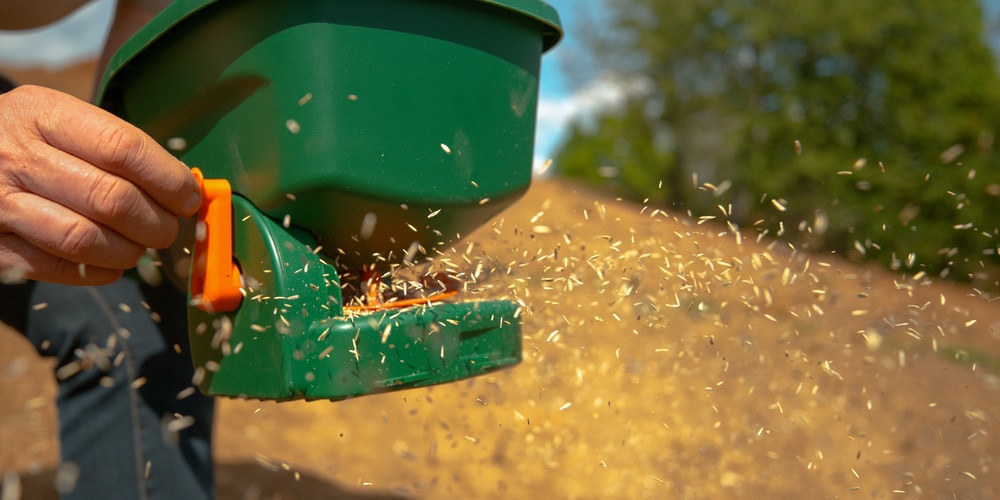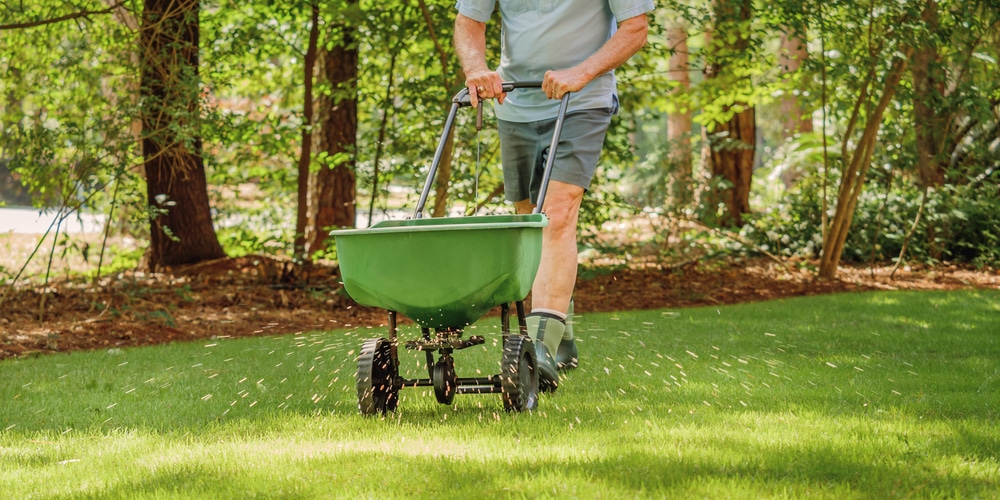Beautiful lawns always evoke feelings of happiness, relaxation, and comfort. Naturally soothing and attractive, a healthy lawn is the result of proper care and maintenance. However, achieving this kind of lawn requires diligent work and the use of the right tools. One of the most critical pieces of equipment in lawn care is the use of a spreader.
Spreaders come in two main types: drop and broadcast. If you don’t have one yet, this piece of equipment gets the job done from fertilizer application all throughout the seeding process.
While both can get the job done, there are certain advantages and disadvantages to each. Understanding how they work and differ makes it easier to make an informed decision before making a purchase.
Spreader: A Quick Introduction

Lawn care requires multiple steps and processes that are not only time-consuming but also technical. Applying fertilizer is just one of these steps, and it’s essential to get it right.
The goal is to provide an even coating of the desired substance over the entire lawn without wasting any product. A spreader does exactly that – it evenly distributes whatever you’re putting down, be it seeds, fertilizer, or herbicide.
Spreaders come in different sizes – and these sizes correspond to the machine’s power and capacity. A smaller spreader is perfect for a homeowner with a small lawn. Conversely, a commercial-grade spreader is what you’ll need if you have a large area to cover.
Broadcast Spreader vs Drop: What’s the Difference?
Both broadcast and drop spreaders have their own distinct advantages. Their main difference, however, is the mode of application. To help you choose which is better for you, let’s take a closer look at how each one works.
Broadcast Spreader
A broadcast spreader resembles a wheelbarrow without the handles or the front bucket. You can manually push this to work or attach it to a lawn tractor. Either way, the spreader has a rotating disc beneath. It acts as the fan, flinging the substance you’re putting down in the fan’s directions.
Once in the air, gravity takes over and ensures an even coating over your lawn. The farther the distance, the thinner the spread will be. Conversely, a broadcast spreader is ideal for covering a large area quickly.
The main advantage of using a broadcast spreader is its speed and efficiency in covering a broad area. It’s perfect if you’re working on a big lawn or have multiple tasks to complete in one go. Another benefit is that it’s easier to operate. You can even do it while walking or riding a lawn tractor.
However, there are some disadvantages to using a broadcast spreader. One is that you might not achieve the desired level of precision and accuracy. Since it mainly relies on the wind to distribute the substance, there’s a higher chance of over-or under-application in some areas. As a result, more wastage might occur.
Drop Spreader
On the other hand, a drop spreader has a much more straightforward mode of application. Instead of flinging the substance in the air, it relies on gravity to pull it down and dispense an even amount as you push it forward. The process is more accurate since there’s no wind factor involved.
With this, you control where you want to apply the fertilizer, herbicide, or seed. You can go over a spot multiple times to achieve the desired level of coverage without worrying about wastage.
The main advantage of using a drop spreader is its accuracy and precision. If you’re particular about getting an even coating, this is the best option. It also doesn’t require as much effort to operate. Since you’re not flinging the substance in the air, you won’t need as much strength to push it forward.
However, there are some disadvantages to using a drop spreader. Despite its precision and accuracy, it may take more time to get the job done. It covers a smaller area compared to a broadcast spreader, so you might need to make multiple passes. Another downside is that it’s not as versatile. You can’t use it on hilly or uneven terrain since the substance may not be evenly dispensed.
Broadcast Spreader vs Drop: Final Thoughts
Buying a spreader isn’t a hit or miss. You need to know which type is most suited for your lawn type, size, and the substance you’ll be using. Several factors such as the wind conditions, spreading goals, lawn shape, and terrain type come into play.
Consider all these factors before making your purchase to ensure you get the most out of your machine. Once you’ve decided on the perfect spreader for you, keeping your lawn healthy and beautiful will be a breeze!
